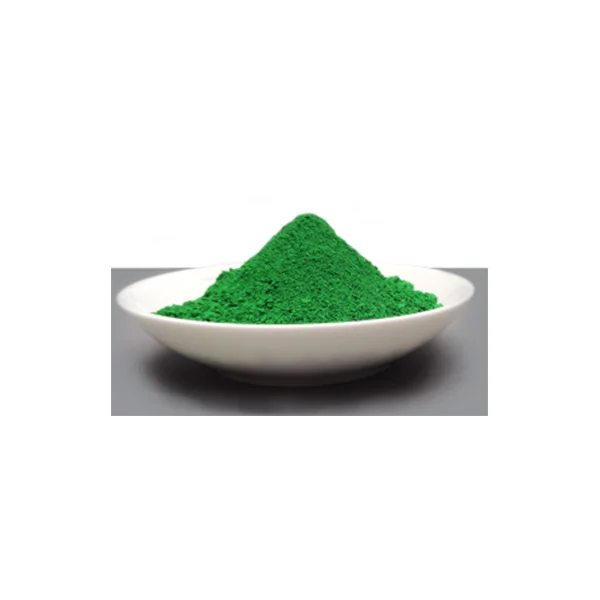Chrome green pigments have captivated artists, scientists, and industrialists alike for centuries due to their vibrant color, stability, and versatility. Derived from a complex chemical reaction involving chromium compounds, these pigments have evolved from mere industrial byproducts to become cornerstone materials in various fields, spanning from fine arts to industrial applications.

The Chemical Genesis: How Chrome Green Pigments Are Made
Chromium's Role in Pigment Creation
Chrome green pigments are primarily composed of chromium oxide mixed with various other elements to achieve the desired hue. Chromium, a transition metal, exhibits unique optical properties that contribute to the pigments' bright and durable colors. The most common chrome green pigment, chromium oxide greens, is synthesized through the calcination of chromium-containing ores at high temperatures.
The Synthesis Process
The synthesis of chrome green pigments involves several steps, starting with the extraction of chromium from its ores. Once extracted, chromium is processed to form chromium oxide, which serves as the base for the pigments. Additional elements such as iron, cobalt, or nickel may be introduced to modify the color and properties of the final pigment. This blend is then subjected to high temperatures, resulting in a stable, finely ground powder ready for use.
Artistic Applications: Bringing Life to Canvases
The Role of Chrome Green in Painting
Chrome green pigments have been a staple in artists' palettes since their commercial availability in the mid-19th century. Their intense color and lightfastness make them ideal for capturing the nuances of nature, from lush forests to turquoise seas. Painters like Vincent van Gogh and Claude Monet incorporated chrome greens into their works, adding depth and vibrancy to their landscapes.
Modern Artistic Innovations
In contemporary art, chrome green pigments continue to inspire creativity. Artists experiment with different application techniques, such as glazing and layering, to explore the pigment's reflective qualities and subtle shifts in hue. Furthermore, the advent of synthetic polymers has allowed for the development of chrome green acrylics and oils, expanding the range of artistic media that can utilize these pigments.
Industrial Utilization: Beyond the Easel
Chrome Green in Manufacturing
Chrome green pigments are not confined to the realm of art; they play a crucial role in numerous industrial applications. Their durability and resistance to fading make them ideal for paints and coatings used in automotive, architectural, and marine industries. These pigments help protect surfaces from UV damage and enhance the aesthetic appeal of various products.
Environmental Considerations and Alternatives
Despite their benefits, chrome green pigments pose environmental concerns due to the toxicity of chromium compounds. Efforts are underway to develop eco-friendly alternatives using non-toxic materials that mimic the properties of chrome greens. Research into natural pigments and biodegradable synthetic options is gaining traction, aiming to balance aesthetic and functional needs with environmental sustainability.
Historical Significance: A Legacy in Color
The Industrial Revolution's Impact
The rise of chrome green pigments coincides with the Industrial Revolution, marking a significant shift in both art and manufacturing. The mass production of these pigments democratized access to vibrant colors, enabling artists and industries to explore new creative and functional possibilities.
Cultural and Artistic Movements
Chrome green pigments have been instrumental in shaping various cultural and artistic movements. Their introduction coincided with the Impressionist period, where artists embraced light and color in revolutionary ways. The pigment's ability to capture the changing light conditions and natural environments resonated deeply with artists seeking to represent reality in new, dynamic forms.
Chrome green pigments stand as a testament to the interplay between chemistry, art, and industry. Their journey from a chemical curiosity to a cornerstone of artistic expression and industrial innovation underscores their unique versatility and significance. As we continue to explore new materials and technologies, the legacy of chrome green pigments will undoubtedly influence future developments, driving creativity and functionality in diverse fields. With ongoing research into sustainable alternatives, the future of these remarkable pigments promises to be as colorful and diverse as their history.
https://www.draycolor.com/from-chemistry-to-art-the-multipurpose-of-chrome-green-pigments.html
